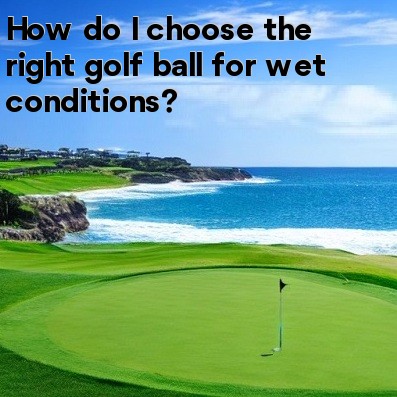
When it comes to playing golf in wet conditions, choosing the right golf ball can make a significant difference in your performance. The wet conditions can affect the distance, spin, and feel of the golf ball. Here are some factors to consider when selecting a golf ball for wet conditions:
- Low Compression: Opt for a golf ball with low compression. Low compression balls are softer and compress more upon impact, which helps to generate more distance and control in wet conditions. Look for golf balls with a compression rating of 80 or lower.
- Urethane Cover: Golf balls with a urethane cover offer excellent performance in wet conditions. Urethane covers provide better traction and grip on the clubface, resulting in increased spin and control. This added control allows you to manage the ball better, even in wet conditions.
- Multi-Layer Construction: Golf balls with a multi-layer construction can be beneficial in wet conditions. These balls typically have a soft inner core and firm outer layers. The soft inner core helps to increase the ball's speed and distance, while the firm outer layers provide control and spin.
- Anti-Spin Technology: Some golf balls feature anti-spin technology, which helps to reduce side spin during impact. This can be particularly useful in wet conditions, as it helps to keep the ball on its intended path and prevents it from veering off course due to excessive spin.
- Visible Color: Opt for a golf ball with a highly visible color, such as yellow or orange, when playing in wet conditions. These colors are easier to spot against the gray sky or wet grass, making it easier to locate your ball.
- Water Resistance: While no golf ball is entirely waterproof, some are designed to be more water-resistant than others. Look for golf balls with water-resistant properties that help to reduce water absorption, as this will prevent the ball from becoming waterlogged and losing its performance characteristics.
- Personal Preference: Ultimately, selecting the right golf ball for wet conditions also depends on your personal preference. Take the time to experiment with different golf balls and find the one that suits your game and feels comfortable to play with in wet conditions.
When playing in wet conditions, it's crucial to choose a golf ball that allows for enough distance, control, and spin. By considering factors such as low compression, urethane cover, multi-layer construction, anti-spin technology, visible color, water resistance, and personal preference, you can find the golf ball that performs best in wet conditions and helps you achieve the desired results.





